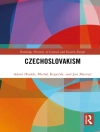The Structures of Practical Knowledge investigates the nature of practical knowledge – why, how, when and by whom it is codified, and once codified, how this knowledge is structured. The inquiry unfolds in a series of fifteen case studies, which range in focus from early modern Italy to eighteenth century China. At the heart of each study is a shared definition of practical knowledge, that is, knowledge needed to obtain a certain outcome, whether that be an artistic or mechanical artifact, a healing practice, or a mathematical result. While the content of practical knowledge is widely variable, this study shows that all practical knowledge is formally equivalent in following a defined workflow, as reflected in a construction procedure, a recipe, or an algorithm.
As explored in the volume’s fifteen contributions, there are three levels at which structures of practical knowledge may be understood and examined. At the most immediate level, there are the individual workflows that encompasses practical knowledge itself. Probing further, it is possible to examine the structure of practical knowledge as it is externalized and codified in texts, drawings, and artifacts such as models. Finally, practical knowledge is also related to social structures, which fundamentally determine its dissemination and evolution into new knowledge structures. The social structures of professionals and institutions represent the critical means by which practical knowledge takes form. These actors are the agents of codification, and by means of selection, appropriation, investment, and knowledge development, they determine the formation of new structures of practical knowledge. On a more abstract level, the creation of new knowledge structures is understood as constituting the basis for the further development of scientific knowledge.Rich in subject matter and incisive in the theory it lays out, this volume represents an important contribution to the history of science and epistemology. Individually, the fifteen case studies – encompassing the history of architecture, mining, brewing, glass production, printing, ballistics, mechanics, cartography, cosmology and astronomy – are replete with original research, and offer new insights into the history of science. Taken together, the contributions remodel historical epistemology as a whole, elucidating the underlining knowledge structures that transcend disciplinary boundaries, and that unite practitioners across time and space.
Jadual kandungan
1. The Epistemology of Practical Knowledge; Matteo Valleriani.- 2. Pocket-size architectural notebooks and the codification of practical knowledge; Elizabeth M. Merrill.- 3. Brewing Ale and Boiling Water in 1651; Elaine Leong.- 4. “Which Cannot Be Sufficiently Described by My Pen.” The Codification of Knowledge in Theater Engineering, 1480–1680; Viktoria Tkaczyk.- 5. Shooting with Ink; Jochen Büttner.- 6. Doing It Wrong: The Translation of Artisanal Knowledge and the Codification of Error; Sven Dupré.- 7. The Chiaroscuro Woodcut in the Early Modern Period; Eileen Reeves.- 8. Multi-tasking “pre-professional” architect/engineers and other bricolagic practitioners as key figures in the elision of boundaries between practice and learning in sixteenth-century Europe: Some Roman Examples; Pamela O. Long.- 9. Architectural Knowledge; Wolfgang Lefèvre.- 10. Knowledge by Design—Architecture and Jade Models During the Qianlong 乾隆 Reign (1735–1796); Dagmar Schäfer.- 11. Hybrid Experts; Ursula Klein.- 12. Utilitas astronomiae in the Renaissance: The Rhetoric and Epistemology of Astronomy; Pietro D. Omodeo.- 13. Incunable Almanacs and Practica as Practical Knowledge Produced in Trading Zones; Richard L. Kremer.- 14. The Codification of Vernacular Theories of Metallic Generation in sixteenth-century European Mining and Metalworking; Pamela H. Smith.- 15. Preserving the Cutting Edge: Traveling Woodblocks, Material Networks, and Visualizing Plants in Early Modern Europe; Bruce T. Moran.- 16. The Tracts on the Sphere: Knowledge Restructured over a Network; Matteo Valleriani.
Mengenai Pengarang
Matteo Valleriani’s research focuses on the history of mechanics from classical antiquity to late Renaissance. In particular, his research intends to determine the role of the relations between practical knowledge and technology on the one side, and theoretical knowledge on the other side, within the framework of the processes of emergence of new theoretical knowledge. The research is structured on four different levels. The first level is the epistemological level that aims at formulating an epistemic theory of practical knowledge. The second level concerns mechanisms of diffusion of practical knowledge and the consequences this diffusion has in different cultures, as well as the transmission over epochs. The third level refers to the relationship between practical knowledge and natural philosophy. Finally, the fourth level analyzes the inherent points of contact between practical and theoretical knowledge and explores the mechanisms of the processes of emergence of newscientific knowledge.
Matteo Valleriani’s research moreover extends the implementation of the approach used to explore mechanisms of diffusion of knowledge also to studies dedicated to the role of Aristotelian knowledge in all cultures and epochs, in which this played a relevant role.












